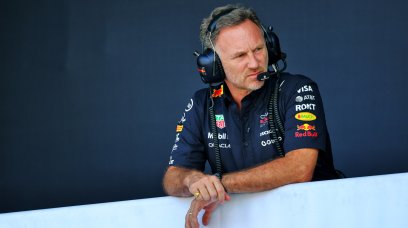Toto Wolff highlighted Red Bull's 'mind-boggling' performance in the DRS zones as a reason for the strong RB19 performance, and believed the Australian GP circuit traits helped Mercedes compete. Mercedes had their most competitive race of the season in Melbourne by finishing in the top three in qualifying and mounting an early challenge for the race win. Max Verstappen ultimately secured the victory for Red Bull ahead of Lewis Hamilton, but Wolff was pleased with the performance shown by the Mercedes team, and pinned hopes on the upgrades later on in the season. "I think we made a good step forward this weekend on the single lap, and race pace. Is this where our baseline needs to be? I'm not sure, but I think we maximised what we have," Wolff told media, including RacingNews365.com . "It was good to see that we were racing Ferrari and Aston Martin, and we just need to consolidate them and then the more we learn about the car and bring the upgrade packages, hopefully we can challenge the leaders more." When asked if the Albert Park circuit had been a factor in Mercedes' improved performance, Wolff replied: "I think [the Melbourne circuit] was definitely an advantage for our car, it lacks a little bit of performance of the rear end, and the track definitely helped us. "I think that's making us look a little bit better than we should be, but we know where the weaknesses are and we just need to sort them out."
Wolff: Red Bull speed 'mind-boggling'
Mercedes' efforts to keep the Red Bull behind were over soon after the first race restart. Verstappen wasted little time in passing Hamilton in the DRS zone before Turn 9. When asked about Red Bull's speed advantage in the DRS zones, Wolff believed it was up to Mercedes to respond to the surprising performance. "They have a straight line speed advantage with the DRS open that is just mind-boggling," added Wolff. “But it's a meritocracy in this sport and if you have a car that’s that quick on the straight because you’re doing the right things, then it’s up to us to sort this out and find the tools to have the same straight-line performance.”
Most read







